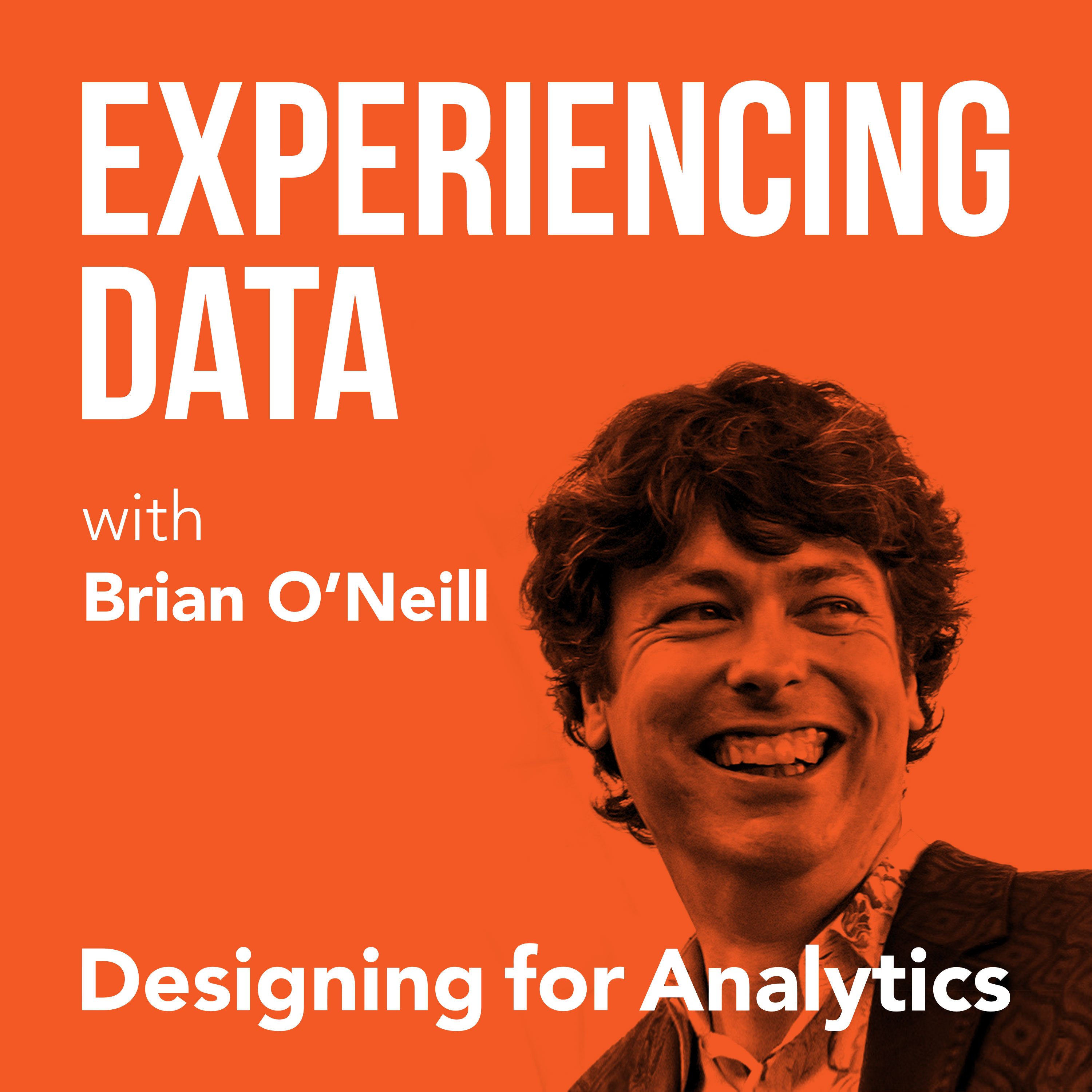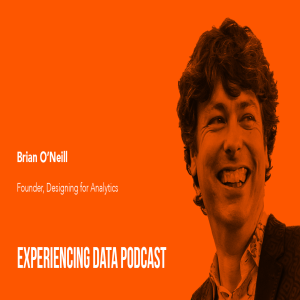

154.8K
Downloads
185
Episodes
Is the value of your enterprise analytics SAAS or AI product not obvious through it’s UI/UX? Got the data and ML models right...but user adoption of your dashboards and UI isn’t what you hoped it would be?
While it is easier than ever to create AI and analytics solutions from a technology perspective, do you find as a founder or product leader that getting users to use and buyers to buy seems harder than it should be?
If you lead an internal enterprise data team, have you heard that a ”data product” approach can help—but you’re concerned it’s all hype?
My name is Brian T. O’Neill, and on Experiencing Data—one of the top 2% of podcasts in the world—I share the stories of leaders who are leveraging product and UX design to make SAAS analytics, AI applications, and internal data products indispensable to their customers. After all, you can’t create business value with data if the humans in the loop can’t or won’t use your solutions.
Every 2 weeks, I release interviews with experts and impressive people I’ve met who are doing interesting work at the intersection of enterprise software product management, UX design, AI and analytics—work that you need to hear about and from whom I hope you can borrow strategies.
I also occasionally record solo episodes on applying UI/UX design strategies to data products—so you and your team can unlock financial value by making your users’ and customers’ lives better.
Hashtag: #ExperiencingData.
JOIN MY INSIGHTS LIST FOR 1-PAGE EPISODE SUMMARIES, TRANSCRIPTS, AND FREE UX STRATEGY TIPS
https://designingforanalytics.com/ed
ABOUT THE HOST, BRIAN T. O’NEILL:
https://designingforanalytics.com/bio/
Episodes

Tuesday Jan 26, 2021
Tuesday Jan 26, 2021
Designing a data product from the ground up is a daunting task, and it is complicated further when you have several different user types who all have different expectations for the service. Whether an application offers a wealth of traditional historical analytics or leverages predictive capabilities using machine learning, for example, you may find that different users have different expectations. As a leader, you may be forced to make choices about how and what data you’ll present, and how you will allow these different user types to interact with it. These choices can be difficult when domain knowledge, time availability, job responsibility, and a need for control vary greatly across these personas. So what should you do?
To answer that, today I’m going solo on Experiencing Data to highlight some strategies I think about when designing multi-user enterprise data products so that in the end, something truly innovative, useful, and valuable emerges.
In total, I covered:
- Why UX research is imperative and the types of research I think are important (4:43)
- The importance for teams to have a single understanding of how a product’s success will be measured before it is built and launched (and how research helps clarify this). (8:28)
- The pros and cons of using the design tool called “personas” to help guide design decision making for multiple different user types. (19:44)
- The idea of ‘Minimum valuable product’ and how you balance this with multiple user types (24:26)
- The strategy I use to reduce complexity and find opportunities to solve multiple users’ needs with a single solution (29:26)
- The relevancy of declaratory vs. exploratory analytics and why this is relevant. (32:48)
- My take on offering customization as a means to satisfy multiple customer types. (35:15)
- Expectations leaders should have-particularly if you do not have trained product designers or UX professionals on your team. (43:56)
Resources and Links
- My training seminar, Designing Human-Centered Data Products: http://designingforanalytics.com/theseminar
- Designing for Analytics Self-Assessment Guide: http://designingforanalytics.com/guide
- (Book) The User Is Always Right: A Practical Guide to Creating and Using Personas for the Web by Steve Mulder https://www.amazon.com/User-Always-Right-Practical-Creating/dp/0321434536
- My C-E-D Design Framework for Integrating Advanced Analytics into Decision Support Software: https://designingforanalytics.com/resources/c-e-d-ux-framework-for-advanced-analytics/
- Homepage for all of my free resources on designing innovative machine learning and analytics solutions: designingforanalytics.com/resources
No comments yet. Be the first to say something!